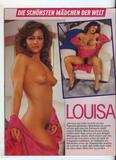Quote:
Originally Posted by svga

Thanks for the response, butI have to rephrase my question: Is there a better way to get a better quality/image size (in bytes) ratio?
One example: I've converted the same scan with two different options to approximately the same size (380 kB):
1st Conversion: convert -resize '1680x1680>' page26.pnm page26-1680x1680.jpg (uses standard compression 85):

2nd Conversion: convert -quality 27 page26.pnm page26-q27.jpg (this sets the "JPEG compression" to 27 without changing the image size):

Which one is better?
Of course proposals for other programs which produce better results are welcome |
Which one is better?
The first picture.
Why?
Because the second picture has too many JPEG artifacts.(the Quality=27 is too low)
There is a problem here, the first picture's size is 1218x1680 (resized 50%), the second picture's size is 2544x3509. It's not easy to compare them when they have different sizes.
Is there a better way to get a better quality/image size (in bytes) ratio?
No. If you want good quality you pay with a bigger file size.
The JPEG compression is lossy, you can use it with Quality setting between 70-100, 85 is a good compromise.
Some HQ (big sizes) examples:
1. 200dpi descreen on - 600kB

3. 300dpi descreen off, edited - 1MB

5. 300dpi descreen on, edited - 1MB

It's interesting that the 300dpi pic with descreen ON has a little moire, and with descreen OFF no moire.
Tuffy